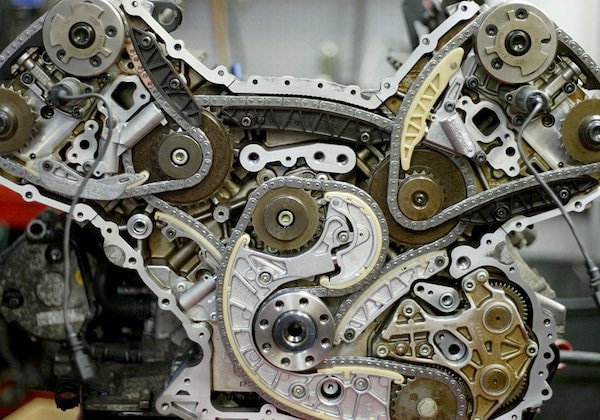
The timing belt (gas distribution mechanism of the engine) is one of the most important parts of the car, which requires regular checking and replacement in case of stretching or wear, or every 60-120 thousand kilometers of mileage, according to the manufacturer's recommendations.
Due to the fact that the timing belt wear can not be manifested in any way during a long period of operation, its rupture can occur quite unexpectedly for the driver. Moreover, the rupture or dismounting of the timing belt as a result of its stretching can lead to serious damage to the engine valve, which as a result will require a major overhaul of the main unit of your car.
In some vehicles, instead of the timing belt, the timing chain is used - it also requires regular checks and maintenance, but often the recommended service life of the timing chain is higher than for the timing belt.
When is the timing belt replacement needed?
- Every 60-120 thousand kilometers of mileage, according to the recommendations of the manufacturer, indicated in the service book of your car
- When a whistle appears during engine operation (indicates excessive stretching of the timing belt)
- The car does not start well or does not start at all
Replacing the timing belt in the CARVEX service station - sign up right now!
- Qualitative work on the installation of a new timing belt - a pledge of his long service. That's why CARVEX employees approach this procedure with all responsibility - they use only high-quality spare parts and strictly observe the technology
- After replacing the timing belt, CARVEX car service specialists pay special attention to the timing marks - we have all the necessary tools for this procedure. If you skip this step of replacing the timing belt, its further diagnosis will be significantly hampered, and the service life may be shortened
- In parallel with the replacement of the timing belt, there is also a replacement of the tensioner roller, by-pass rollers, camshaft seals, and in some situations the replacement of the water pump. Such a complex of works guarantees you reliable and uninterrupted operation of all mechanisms during the next 60-120 thousand kilometers of run



